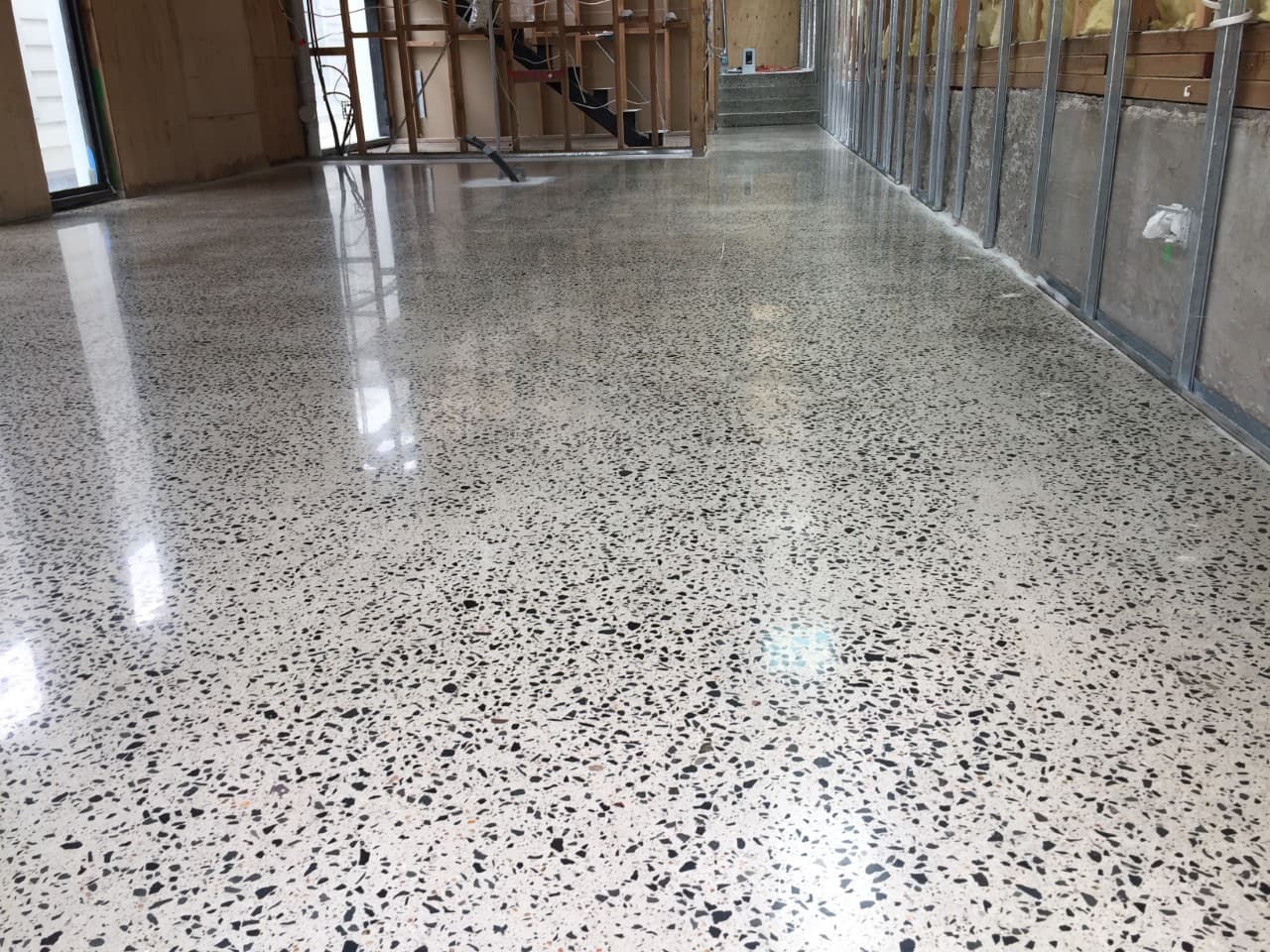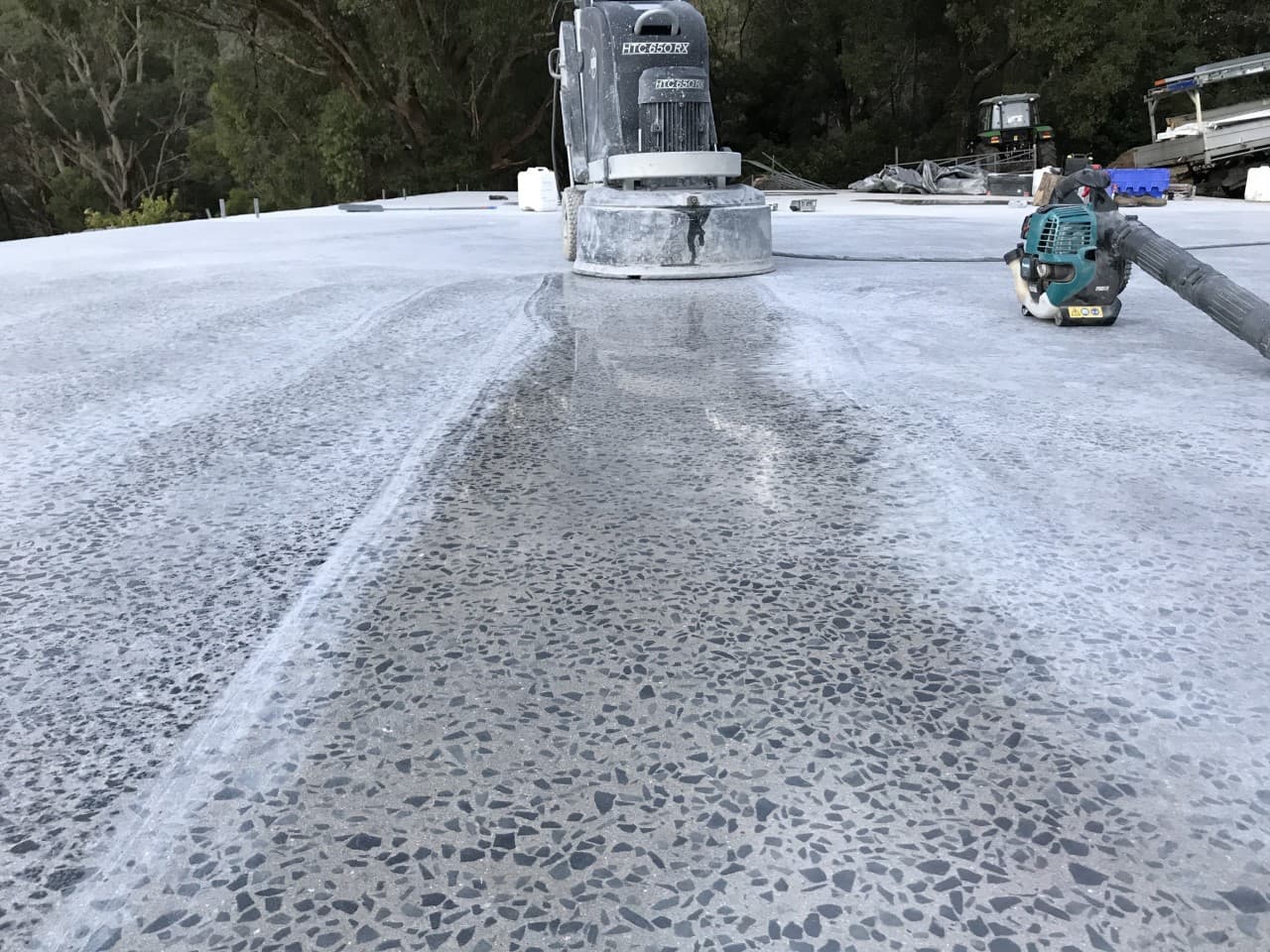
Choosing a floor that best suits your place and preferences will never be easy. A lot of details are needed to be considered and checked, not only that, but a handful of information must also be grasped and understood because you must be able to understand the flooring system for budget and maintenance purposes. If you are looking for flooring that can withstand high foot traffic, then polished concrete flooring best suits you. People frequently confuse sealed concrete with polished concrete, and if you want a gleaming concrete surface, the latter should not be your first choice.
EzyGrind offers a variety of professional flooring services in Sydney, including concrete floor grinding and polishing, epoxy flooring, and floor preparations, and you can contact us for your different inquiries.
Where can Polished Concrete be used?
Are you seeking a commercial or industrial floor or an aesthetic floor for your residential space? One that could withstand wear without requiring frequent maintenance, one that could look appealing while still lasting a lifetime, and one that was relatively affordable? For your needs, polished concrete flooring is the ideal option.
Polished concrete flooring are adaptable enough to work in a wide range of environments. Retail establishments, warehouses, restaurants, hotels, offices, hospitals, residential areas, and auto showrooms all have a significant need for concrete grinding and polishing services.
The Process of Polished Concrete Flooring
A chemical densifier is applied to concrete floors and this densifier acts as a hardener, penetrating any open space and forming a dense layer. The chemical densifier’s job is to fill any gaps or natural pores that may exist in the material. The chemical reaction caused by the densifier eliminates the need for a topical coating and lowers long-term maintenance costs.
After this process, the progressive grinding begins with the use of coarse diamond segments bonded in a metallic matrix to bring out the varying levels of intended shine and smoothness. An interior impregnating sealer is applied during the polishing process. The sealer penetrates the concrete and preserves it from the inside out, as well as hardening and densifying it.
Following this, incremental grinding occurs with the application of coarse diamond segments bonded to achieve the desired levels of shine and smoothness. An interior impregnating sealer is applied during the polishing process. The sealer hardens and densifies the concrete while also penetrating it and preserving it from the inside out.
Here are some brief overviews of the steps:
- Remove previous floor coatings; thicker coatings should be removed with a more vigorous instrument designed for coating removal. This phase differs depending on whether you’re refinishing an existing floor or beginning from scratch.
- If there is any damage to the existing floor, seal cracks and joints using epoxy or another semi-rigid filler.
- Begin the diamond grinding procedure by exposing big particles and smoothing the concrete surface using a low grit diamond (30-40 grit).
- Densify the concrete with a chemical hardener.
- Polish the surface with resin discs ranging from a minimum of 100 to a maximum of 800 grit resin-bond diamond.
- Apply a stain guard or oil and water repellents to help protect the polished surface and make it easier to maintain.
Wet VS. Dry Polishing
You might wonder whether you should use a wet or dry concrete polish. You must first answer the following questions before getting to a conclusion: What are the state of the concrete floor, the surrounding environment, and the intended appearance of the finished product?
Wet or dry polishing can be used by ground and polished concrete contractors, but most of the time, a combination of wet and dry polishing is preferable.
Wet Polishing
Wet polishing cools the diamond abrasives with water, trapping the dust in a slurry that stays out of the air. The grit sizes of the polishing disks for this approach are the same. Because water works as a lubricant and lowers friction, it extends the life of polishing abrasives, especially resin-bonded disks, which can melt at high temperatures. When compared to dry polishing, the end-product does not reach the same high gloss finish, and cleaning the wet slurry on the surface takes longer. Wet polishing, on the other hand, is less expensive, has less downtime, and is a dust-free technique.
Dry Polishing
No water is required for dry polishing, and it always works better on a soft polished concrete flooring. The surface of the concrete is ground using commercial-scale polishing machines for the dry polish procedure. When more concrete is being removed, dry polishing is typically employed for the early grinding operations.
Each stage of the procedure necessitates the use of a different abrasive polishing disk, sometimes with diamond grit, with coarser textures for early stages and finer textures for the ultimate shine. Thanks to hand machines, this operation can be done in both open regions and small corners. In comparison to wet polishing, it can do more to the slab in terms of hardening and condensing, and the end result has a higher sheen. The technique, however, requires more downtime and is often more expensive than wet.
Here are the 10 care tips to make your polished concrete flooring last longer.
When someone decided it was time for the exquisite and plush flooring option of concrete to rise from the ashes, it made perfect sense—with the help of some cutting-edge aesthetic treatments, of course. Concrete floors have progressed from being viewed solely as a sub-flooring material to being substantially more.
For both domestic and corporate settings, polished concrete flooring has swiftly become one of the most prominent flooring solutions available. One of the most inherent benefits of this attractive flooring style is that it requires very little care and is incredibly cost effective.
Despite the fact that polished concrete floors are not completely maintenance-free, they are often less difficult to maintain than other forms of decorative concrete floors because they do not require the use of wax or sealers. While they are simple to upkeep, this does not imply that they should be overlooked. It is still equally imperative to take care of your polished concrete flooring on a daily and weekly basis to guarantee that they retain their lustrous appearance for many years to come, even over heavy traffic. And in order to retain its tiptop condition, here’s x care tips to make your polished concrete flooring last longer.
1. Steer Away from Rubber Backed Mats
Placement of rubber-backed mats on any aesthetic surfacing system is not recommended because they may capture rising vapors that are naturally emitted from cementitious substrates, resulting in the formation of a hard mineral deposit that may damage the surface and finish.
2. Opt for Hot Water Instead of Abrasive Chemicals if Stains Are Manageable
For the majority of your cleaning needs, hot water will suffice. For those who prefer a detergent, make sure it is a neutral cleaner for natural stone or concrete that has been adequately diluted before use. Due to the reactivity of concrete, it can etch when exposed to highly acidic or alkaline solutions.
3. Spills Should Be Cleaned Up Immediately
Cleaning your polished concrete flooring as soon as you discover any stains, spills, or unusual discolouration is the best approach to guarantee that the stain does not become permanently embedded in the surface. Otherwise, stains have a horrible habit of seeping into your flooring and creating degradation, which may necessitate the costly and time-consuming process of a full-scale restoration.
4. Daily Dry Mop
It is recommended to dry mop your polished concrete floors on a daily basis to remove abrasive dust particles that are drawn to the micro gaps in the concrete. While dust may appear to be innocuous, it has the potential to grind on the polished concrete flooring‘s surface, reducing its clarity and shine in the process.
5. Programs for Matting
To prevent filth and dust from accumulating in big spaces with polished concrete flooring, it is recommended that soft floor coverings be used. Institution managers can choose from a variety of mat programs to create a unique program that meets the specific demands of their facility. You may get mats in a variety of sizes and shapes that can be modified with logos and branding features to help them become a continuous part of the design architecture. There are disposable, rental, and direct buy options
6. Utilise PH Neutral Floor Cleaning Agents
The use of only water will most likely result in dirt being left on the floor. Over time, accumulated dust dulls the brilliance of polished concrete flooring, causing it to appear dull. Dust and dirt can enter the surface of the floor, causing harm. You’d know for a fact that dust and dirt can permeate the surface of the floor. The use of a pH neutral cleanser helps to avoid a chemical reaction between the concrete and the cleaner. Acidic cleaners and polished concrete flooring do not go together like peanut butter and jelly. Polished concrete floors are susceptible to penetration and deterioration by a variety of cleaning agents, including bleach, ammonia, vinegar, lemon, and pine-based cleaner.
7. Wet Mopping on a Weekly Basis
While dry mopping is necessary, wet cleaning your polished concrete flooring on a weekly basis – using clean water and a clean mop – is imperative to increasing the utilisation of your floors and ensuring its longevity. This will aid in the removal of potentially dangerous filth, debris, and other grime that has accumulated on the surface of your flooring over time. Mops and pails are sufficient for cleaning up smaller areas. Auto-scrubbers with a soft microfiber pad, on the other hand, are often the most efficient in larger settings.
8. Adjust Sprinkler Systems on Garage Polished Concrete Floor
Make adjustments to the nozzles of landscape sprinkler systems to prevent excessive watering of driveways, patios, walkways, and decks. If decorative concrete surfaces are permitted to remain wet for a lengthy amount of time, hard water deposits have the ability to discolor them.
 9. Administer Cleaning by Sections
9. Administer Cleaning by Sections
It’s not a good idea to rush through the cleaning procedure, whether it’s an industrial location or the flooring in someone’s basement. Keep the cleaner from smearing across a big area of the polished concrete flooring. This allows the cleaning solution to settle on the floor, resulting in a grime-loving residue that may be removed later.
Professional floor cleaners are aware of the importance of working in portions. Make use of their example and administer cleaner to one corner before moving on to a different one. After applying cleaner to the new region, revert back to the first corner and wet-mop or vacuum the entire area again.
10. Look out for Deicing Compounds
Never use a deicing substance that contains salts, ammonium nitrate, or ammonium sulfate, or any combination of these ingredients. Many different types of sealers and aesthetic surfacing systems are quickly attacked and disintegrated by these chemical de-icers. De-icers containing magnesium chloride, on the other hand, can cause moderate injury.
Need polished concrete floor services? EzyGrind’s highly skilled concrete floor grinding and polishing personnel are experts in all aspects of concrete polishing solutions. They know exactly what is required to reach the highest level of quality. Our professionals will create a balance between beauty and functionality to offer you a shine that matches its endurance, making it almost maintenance-free. We also have the tools to complete the job swiftly and efficiently, with the least amount of disruption and delay possible.
Get a quote for our polished concrete floor services by filling out the form below:

